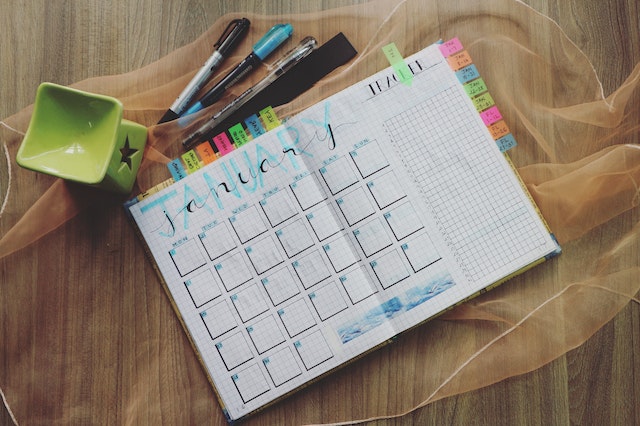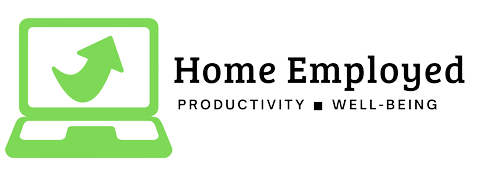Although the digital era has created opportunities far beyond our imagination, is has become harder to create productive remote work environment. After the pandemic, working from home became the symbol of productivity and growth for many employees and employers alike across the globe. But it’s all fun and games until it stops working for you.
In a remote setting, there is no one to acknowledge your achievements, make you feel welcome, or help you correct mistakes instantly. Not to mention the constant distraction from notifications and your family walking around isn’t suitable either.
With all these new and different sources of distractions and environmental factors, you need to review your situation and find what works for you. Let’s explore how you can create a productive remote workplace to boost your output.
To create a productive work environment you need to avoid procrastination, which means removing distractions, forming boundaries, creating deadlines, staying organized, taking mindful breaks, and devising a consistent schedule.
Procrastination Means Loss
To procrastinate is to lose. It is one of the major contributors to the lack of productivity. It is human nature to complete an assignment at the last possible second. The added pressure of completing a task on time, when time is short, often fuels people to push themselves and become more productive. A study depicted that 13% of remote workers are more productive than their office counterparts. Which means that for most people, working from home is not the right fit.
There always comes the point when everybody procrastinates. So, what’s the solution to better working?

Setting Deadlines
Setting a deadline on your assignment gives you a sense of organization. It allows you to develop a timeframe of how and when you should work on this specific task. You should ideally set a deadline a day or two earlier so that you can watch your Netflix show in peace.
S.M.A.R.T. goals are a excellent way to setting up goals and tasks. The acronym stands for Specific Measurable, Attainable, Relevant, Timebound. This outlines a template to setting goals.
Organizing your productive remote work environment
Organizing your things acts as a building block for increasing productivity. Stylish storage is a great way of not only organizing yourself, but also decorating. Organization not only saves you time, but also enhances your total output from your work. Setting up your workstation at home should not be any less valuable than that at your office.
Take advantage of your space by putting things that matter close to you and have everything easily accessible. Be it a pen, a notepad, your cup of coffee, or your laptop charger, a close reach on things can help you stay focused.
Here are a few tips to staying organized.
- Have a specific place for everything
- Use storage bins
- Color code your folders and note books
- Use drawer inserts to organize your drawers
Be mindful of targets while creating a productive remote work environment
Use incentives to fuel your work and increase productivity at the same time. Work becomes easier when there is a prize or reward attached to it. It gives a sense of joy and achievement upon accomplishment of that task.
I personally use watching a movie with popcorn and a drink as a means to push myself during my working hours to be most productive. If I don’t accomplish my goal, then I do not permit myself to my reward myself to my movie.
Take advantage of the momentum of driving towards targets, use the small wins to avoid procrastination. Incentives are also a great source of bringing creativity into your style, which gives birth to innovative ideas. Because if something is not working the first time around, then to reach the incentive you need to revaluate the situation and approach it from a new angle.
5-Minute Break Sessions
Taking breaks throughout your work schedule can increase your daily output and relax your mind. Some people may perceive taking breaks as ‘lazy.’ But it is a simple exercise that opens your brain to think creatively.
It is also essential to plan your breaks so you don’t waste precious time breaking. A 5-minute break session every 55 minutes of work can calm your nerves and increase your focus. It also serves as a mood booster and can increase productivity significantly.
The latest figures state that 61% of people burn out on the job. Therefore, take a moment to calm your thriving engines.

Distractions Are Distress
To create productive remote work environment I’ll admit, distractions are not easily avoidable. They can occur at any time and cause productivity to slow down. Therefore, paying attention to them and understanding what makes you feel procrastinated is essential. Here’s how you can eliminate distractions from your work routine.
Turn off your notifications for the day
Turning off your notifications can help you stay focused on the things that matter. Getting a message before designing a poster or making a presentation can rupture your creativity. Thus, it is essential to keep your attention on the task at hand rather than a notification that’s not very important.
Turn off your television
Television might not sound like a distraction in this modern era. However, the urge to watch quick content compels us to reach for the remote. And while it is counter-productive, lunch breaks usually extend for this reason. Hence, it is crucial not to divert your attention and indulge in the madness of shows, news, and music. You’d be surprised at how much time you can save by simply keeping your TV off.
Devise a Schedule
One of the best way to create productive remote work environment is creating a consistent schedule. For instance, a consistent waking time in the morning, a email checking routine, etc.
Managing your time is as essential as doing business. A remote setting can quickly put you off your work. By planning and setting a schedule, you will know the different barriers and topics you must work around. Yes, you’ll have to invest your time to plan your time. But it is worth it, especially when you come across your results after scheduling your day.
Planning your time doesn’t only point to planning it. It also signifies that you have to execute your work according to it. Plan your schedule a day before to stay on top of things and adjust last-minute calls. Prioritize which tasks you must complete first. After that, set a timer on how long it will take you to achieve it.
Your schedule may differ depending on your workday. But most of the things you kept track of would’ve probably been crossed off. Thus, it is critical not to adopt norms and do something different, in this case, timing yourself.

The Bottom Line
The above-mentioned tips are proven methods to enhance your remote work and produce greater productivity.
At the end of the day, the power to your success belongs to you. Commitment to your ideas is what channels growth. As you plan your time and manage your success, understand what will work for you and what won’t. Adopt the out-of-box thinking and turn it into a practical approach. Taking action to your words is accurate determination.
With these tips implemented, you will experience greater productivity in your everyday workflow and be motivated to achieve more.















